Unresolved patterns, regarding child abuse and neglect, are bound to repeat themselves. Even in the face of our best intentions. You can’t cheat the unconscious even if you try very hard.
You might have found yourself exhibiting similar behavior as one of your parents that you have sworn to yourself, as a child, you would never do. And exactly within that promise to yourself is the culprit.
Child Abuse and Neglect and How we React to It as Children
Most serious PTSD Symptoms, regardless of adult life traumas and upsets, have their roots in childhood experiences. Most often these experiences span periods and are intimately related to the people you have grown up with; your parents, close family, siblings or friends of the family.
An adult mind is different from a child’s mind and how we as children process our experiences. As a child, we are much more dependent on our parents or caregivers for emotional and physical support.
When there was abuse going on, when you were a child, acting out anger generally isn’t a safe option. It might lead to more severe punishment or emotional shut down by the parent or abuser present.
Need for Survival Strategies When Suffering Neglect and Child Abuse
It is at these moments, when we feel overwhelmed and can’t act out our rightful anger and disagreement that we make decisions born out of survival. These might be; to emotionally withdraw and disconnect, to make a statement to oneself of ‘I will never become like that’ or ‘the world, men or women can’t be trusted’ or a combination of all of them.
Most serious PTSD Symptoms, regardless of adult life traumas and upsets, have their roots in childhood experiences. Often these experiences span periods and are intimately related to the people you have grown up with; your parents, close family, siblings or friends of the family.
This internal decision is the splitting away from integrity, creating duality and reenactment.
During that period of time, when abuse was going on, you didn’t have the capacity to stand up to the situation. You could not act successfully to reestablish your boundaries and safety hence you chose the next best thing: To survive!
What is the Pay-off and What are the Costs
You needed to either disconnect or create an opinion about the world or certain people thereby locking opposing emotions into play.
Residual emotions and reenactment later in life show up as indulgence into patterns or behavior followed by self-loathing and withdrawing, only to be followed again by further involvement of the same pattern. And this happens on different levels.
At the core of it is fear of meeting one’s own anger, based on the experiences and the emotional memory we hold onto, that keeps reenactment alive.
Child Abuse and Neglect and How Reenactment Plays Itself Out
Maria grew up with her mother often shouting and belittling her. As a child, she concealed her anger toward herself about her mistreatment for fear of repercussions and instead vented it on her little sister or acted it out as self-harm.
As an adult, she has children of her own and she notices how she acts out the same behavior as her mom; shouting to her kids when she gets stressed. From an adult perspective, she does not want to, but she finds herself impulsively doing it.
[thrive_leads id=’12447′]While working with her we find out that it is a repeating pattern that is kept in place by her child-self that hasn’t yet faced up to the fear of her mother and the anger she has repressed. As we work with that, somatically and cognitively, her symptoms and relationship with her partner and children start to change for the better as well.
In which areas of your life do you notice you are reenacting your past? Write your comment here below.

